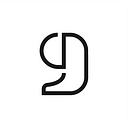ggplot2
ggplot2 provides the most feature-rich and versatile graph creation package based on the grammar of graphics framework as part of the robust tidiyverse ecosystem. This principle breaks down graphs into components such as datasets, scales, levels, and so on. In a declarative manner, the user combines these components to describe and create any diagram.
This method has become so popular that it has effectively replaced R’s native diagrams and added several extensions, some of which will be discussed here.
This article is brought to you by CiteDrive: Are you writing reports in Quarto or R Markdown? Then you should look into CiteDrive, a project-based and collaborative web-reference management tool based on BibTeX that will assist you in keeping your citations, bibliographies, and references in sync with RStudio. Try out for free.
Leaflet
The New York Times and the Washington Post both use Leaflet by Volodymyr Agafonkin, one of the most popular open-source JavaScript libraries for interactive maps. Leaflet for R makes it simple to incorporate leaflet maps into R.
simplevis
We’ve already introduced two useful tools: ggplot2- and leaflet. The goal of simplevis is to make visualization easier with less brainpower by providing a package of wrapper functions for these two packages.
ComplexHeatmap
ComplexHeatmap is a powerful R package by Zuguang Gu [see paper] that takes heatmap visualization to the next level. Perfect for bioinformatics and complex data analysis, it lets you create stunning, customizable heatmaps with rich annotations, multiple layers, and clustering — all with precision and flexibility.
GGANIMATE
gganimate is a ggplot extension that allows you to create diagrams with beautiful animations in R.
The grammar principle is supplemented by a number of extra components that the data scientist can add to the ggplot object to represent how it should change over time.
circlize
circlize is an R package that transforms complex datasets into stunning circular visualizations. Created by Zuguang Gu, it excels at crafting circos plots, chord diagrams, and other circular layouts, making it perfect for genomic data, relationships, and network visualization. With its flexibility and precision, circlize lets you map multiple layers of data onto a circle, revealing patterns and connections in a visually engaging way.
ggvis
In keeping with the ggplot2 philosophy (and the grammar of graphics), ggvis allows users to create interactive graphics that can be tested in Rstudio or in the browser using the shiny infrastructure.
RGL
RGL allows you to create interactive 3D graphics in R using OpenGL or WebGL as the backend.
rayrender
This open-source R package, inspired by Peter Shirley’s three books on ray tracing, allows you to do the same thing when creating 3D scenes in R.
highcharter
This R package contains a set of wrapper functions for the JavaScript library of the same name. BBC, Sony, and Twitter are already using Highcharts (JavaScript) as a flexible and customizable chart library.
Plotly
The emphasis of Plotly is on interactive, publication-quality diagrams. There are examples for creating line charts, scatter plots, area plots, and so on.
Lattice
Lattice is a powerful and elegant high-level data visualization system inspired by Trellis graphics, with a focus on multivariate data. While adequate for most graphing needs, Lattice is adaptable enough to meet the majority of non-standard requirements.
